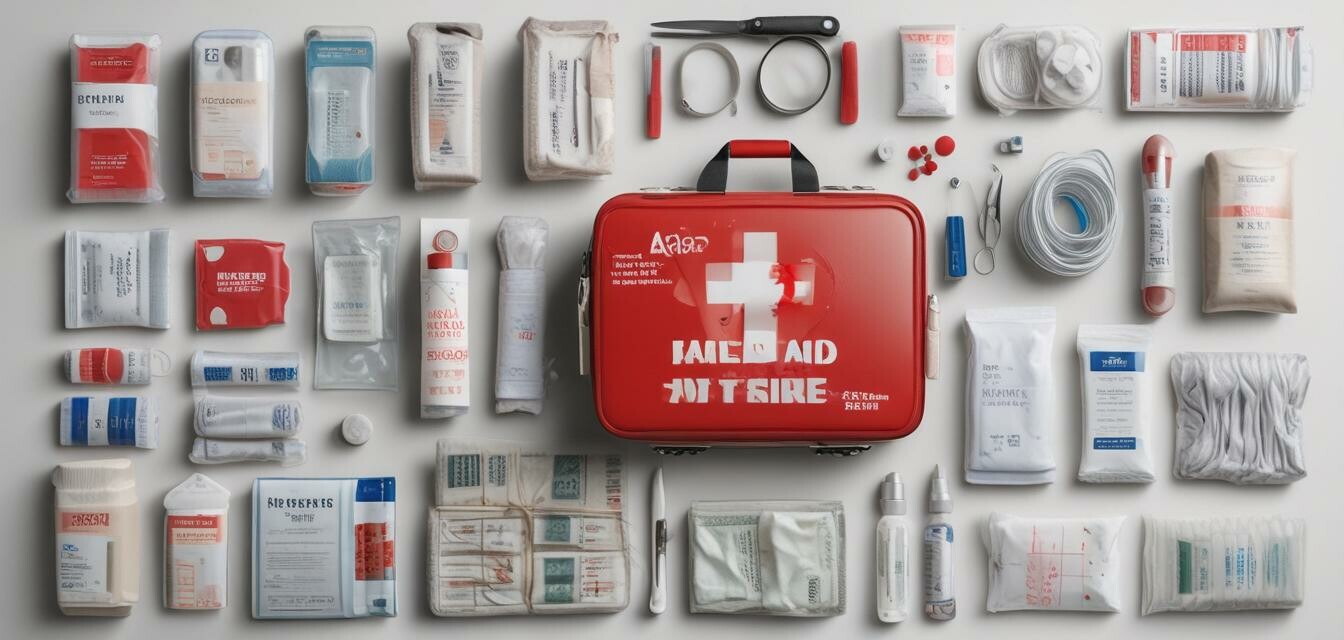
Natural Disaster Kits
Key Takeaways
- Natural disaster kits are essential for preparedness against events like hurricanes, earthquakes, and floods.
- Each kit should include emergency food supplies, first aid kits, and tools specific to the type of disaster.
- Customization of kits based on individual needs and local risks increases effectiveness.
- Regularly check and update your kits to ensure all items are in good condition.
When it comes to preparing for natural disasters, having the right survival kit can make all the difference. Whether it's a hurricane, earthquake, or flood, a well-stocked kit tailored to your specific needs can provide peace of mind and safety. In this guide, we will explore the different types of natural disaster kits, their essential components, and how to customize your kit based on your location and personal needs.
Types of natural disaster kits
Natural disaster kits can vary significantly based on the type of disaster you are preparing for. Below are some common types of disaster kits:
| Type of Disaster | Recommended Kit Components |
|---|---|
| Hurricane | Water, non-perishable food, flashlights, batteries, first aid kit, documents in a waterproof bag |
| Earthquake | Water, food, emergency blanket, whistle, dust mask, first aid kit, multi-tool |
| Flood | Water, food, waterproof bag for documents, flashlight, battery-powered radio, first aid kit |
| Wildfire | Water, N95 masks, food, emergency blanket, fire-resistant bag for documents, first aid kit |
Essential components for your kit
When assembling a natural disaster kit, consider including the following essential components:
- Emergency Food Supplies: Non-perishable food items that provide energy and nutrition.
- Water: At least one gallon per person per day for at least three days.
- First Aid Kit: A complete first aid kit with appropriate supplies for injuries.
- Tools and Gadgets: Items like a multi-tool, flashlight, batteries, and a whistle.
- Communication Devices: Battery-powered or hand-crank radios to stay informed.
- Shelter and Sleeping Gear: Emergency blankets or sleeping bags for warmth.

Customizing your kit
It's important to customize your natural disaster kit based on your individual needs and local risks. Here are a few tips:
Tips for customizing your kit
- Assess the types of disasters common in your area and prepare accordingly.
- Include personal medications and hygiene products.
- Consider adding items for pets if you have them.
- Regularly update your kit by checking expiration dates and replacing items as needed.
- Involve your family in the planning process to ensure everyone's needs are met.
Storing your disaster kit
The location and storage of your disaster kit are as important as its contents. Here are some best practices:
- Store your kit in an easily accessible location known by all family members.
- Keep your kit in a waterproof container or bag to protect it from moisture.
- Regularly inspect the kit to ensure all items are in good condition.
- Consider having multiple kits if you have a large family or multiple locations.

Preparing for different scenarios
Different natural disasters require different preparations. Here's a breakdown of what to focus on for each scenario:
| Disaster Type | Preparation Focus |
|---|---|
| Hurricane | Secure your home, stock up on water and food, and have evacuation plans ready. |
| Earthquake | Practice earthquake drills, secure heavy furniture, and have supplies ready. |
| Flood | Know your evacuation routes, and have your kit ready to go at a moment's notice. |
| Wildfire | Create defensible space around your home, know evacuation routes, and prepare your kit. |
Additional resources for preparedness
For more information on natural disaster preparedness, consider visiting the following pages:
- Emergency food supplies - Essential non-perishable food items to keep you nourished.
- First aid kits - Comprehensive kits for injuries and emergencies.
- Navigation and communication devices - Stay informed and find your way during emergencies.
- Shelter and sleeping gear - Items to keep you safe and warm.
- Survival tools and gadgets - Useful tools to have on hand during a disaster.
Pros
- Preparedness can save lives and reduce panic during disasters.
- Customizable kits can meet individual and family needs.
- Having a kit ready promotes peace of mind.
Cons
- Initial investment may be high for quality supplies.
- Maintenance of kits requires time and effort.
- Some items may need regular replacement due to expiration.

Conclusion
In conclusion, being prepared for natural disasters is crucial for safety and survival. By creating a customized natural disaster kit that includes the essential components, assessing your local risks, and regularly updating your supplies, you can ensure that you and your family are ready for any emergency. Remember, preparedness is key, and investing time in assembling your kit can make all the difference when disaster strikes.









